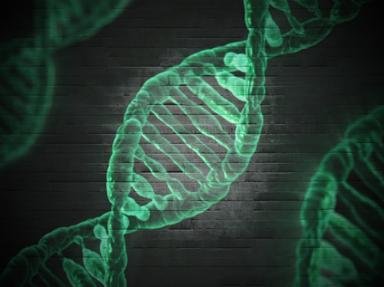Quiz Answer Key and Fun Facts
1. Mutation can occur during DNA replication, which is performed by an enzyme called DNA polymerase. This enzyme is not 100% efficient (hence the mutations), but it does have a built in ability to degrade DNA that it has synthesised and which contains a mutation. What is this ability called?
2. Mutations to DNA that are not corrected by DNA polymerase may be targeted by a set of proteins that detect incorrectly paired DNA nucleotides and induce the degradation of this DNA segment. What is this process known as?
3. As well as mispairings in DNA, more serious events can occur during DNA replication - namely breaks in the DNA backbone. This can lead to the loss of entire sections of chromosome and so must be repaired when they do occur. What term is given to the repair mechanism which uses undamaged DNA as a template to "rescue" broken DNA?
4. As well as mechanisms to reverse DNA damage and thus reduce the risk of cancer-development, the human body also employs several preventative measures. These include the use of vitamin C, vitamin E, and superoxide dismutase to reduce the amount of DNA-damaging agents. What name is given to these particular damaging agents that arise from cellular respiration?
5. After replication has occurred, DNA exists in cells and is exposed to mutagens from the environment. One such mechanism to correct damage is the nucleotide excision repair (NER) mechanism, which often targets damaged sites known as thymine-dimers. Which mutagen, often associated with the ozone layer, causes these thymine-dimers?
6. Similar, though not identical, to nucleotide excision is base excision repair (BER). This process removes nucleotides that have undergone deamination. What is meant by deamination?
7. Alkylating agents are substances which damage DNA and so increase the chance of cancer formation. How do these agents damage DNA?
8. When DNA breakages occur, the cell may resort to joining the break and tolerating the loss of the DNA in between. The proper name for this process is called non-homologous end-joining, but what term is also used to describe it?
9. It is thought by many that stem cells are the cells which accumulate damage and become cancerous. These cells are therefore afforded extra protection to prevent the development of cancer. Which of the following is NOT a quality of stem cells which leads to protection from mutations/cancer?
10. As discussed, there are several ways by which the human body can prevent and repair damage to the DNA, thus protecting from diseases such as cancer which rely on such mutations. The final line of defence of cells which acquire extensive damage is to undergo apoptosis (programmed cell death). What benefit does this action offer?
Source: Author
doublemm
This quiz was reviewed by FunTrivia editor
CellarDoor before going online.
Any errors found in FunTrivia content are routinely corrected through our feedback system.

